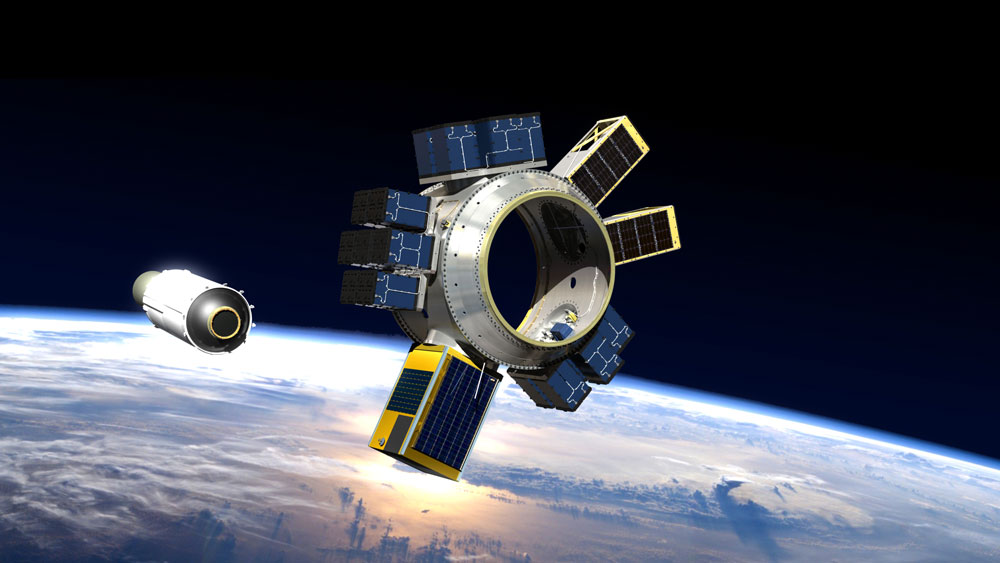Products You May Like
The Space Force’s launch enterprise is trying to gain better insight into the next wave of space innovation and figure out how the military could acquire those capabilities.
WASHINGTON — SpaceX and United Launch Alliance were selected as U.S. national security launch providers based on their ability to deliver spacecraft to specific Earth orbits. How the Pentagon buys launch services in the future could change, however, as the military considers using emerging technologies and services known as “space mobility and logistics.”
Col. Robert Bongiovi, the director of the Space Force’s launch enterprise, said his office is trying to gain better insight into the next wave of space innovation and figure out how the military could acquire those capabilities.
The Space and Missile Systems Center Launch Enterprise issued a request for information Nov. 10 asking companies to submit by Jan. 15 details on planned investments that would support space mobility and logistics.
Space tugs that move satellites to different orbits or within orbits, satellite refueling and servicing vehicles, and in-space manufacturing are some of the capabilities mentioned in the request for information as examples of the future space ecosystem.
These are all new space missions and capabilities that the military doesn’t currently do. Bongiovi said last week at a Mitchell Institute event that the information submitted by the industry will help the Space Force decide on future investments in space access, mobility and logistics.
The Space Force in its vision document mentions space mobility and logistics as “core competencies” of the service.
Bongiovi said there are currently no plans to change the structure of the national security launch program, which relies on two launch providers to fly military and intelligence community satellites to multiple orbits. But he said the Space Force is doing market research that could inform the requirements for launch providers for the next national security space launch competition in 2024. “Industry has a view of the future that is very expansive,” he said.
“We have to have honest conversations with industry on where they’re going and why,” said Bongiovi. “We also have to talk to our satellite providers and understand the demand.”
Point-to-point transportation
One potential future use of space vehicles contemplated by the military is for cargo delivery on Earth. The U.S. Transportation Command, which is responsible for moving personnel and cargo around the world, is studying how space launch vehicles might be used to transport supplies and people in emergencies .
The idea has fascinated senior officials like Will Roper, assistant secretary for acquisitions for the Department of the Air Force. Using suborbital space vehicles for point-to-point delivery opens up intriguing possibilities, he told reporters Nov. 24.
“My personal view, from what I see industry developing, is that logistics is a really interesting capability to rethink,” he said. “You can put mass quickly to the other side of the world.” Special operations forces could be on the ground halfway around the world in minutes, said Roper.
Bongiovi seemed skeptical, however.
The Space Force launch enterprise, he said, supports studies on the use of space vehicles for cargo delivery. On whether this could actually be done, Bongiovi said, “I don’t think in the launch enterprise we have insight to answer this.”
Launch companies will “provide us the opportunity to take advantage of new uses for their systems,” he said. “I don’t know that this is going to be one of them.”
Lt. Gen. John Shaw, deputy commander of U.S. Space Command, suggested the military will wait and see how these technologies are employed in the private sector before it commits to fund programs.
Asked to explain how the military sees space mobility and logistics, Shaw said: “I’ve been intrigued by that concept for a long time.”
“I think we will watch it closely to see how effective it becomes on the commercial side, and in parallel see if we can introduce that into our architecture as a possible resilience measure or life extension measure,” Shaw said Nov. 20 at an online event hosted by the Air Force Association’s Schriever Chapter.
Shaw said the Space Force has to carefully analyze these options and figure out “what parts of the space architecture benefit from that service.”
